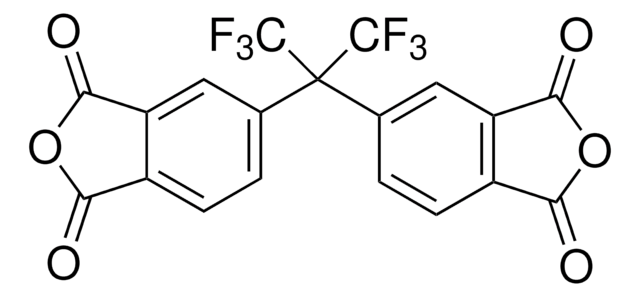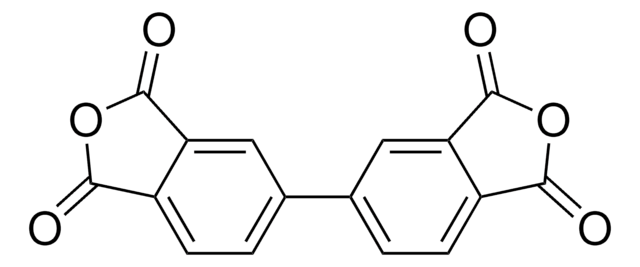516805
4,4′-Oxydianiline
97%
Synonym(s):
4,4′-Diaminodiphenyl ether, 4-Aminophenyl ether
About This Item
Recommended Products
vapor pressure
10 mmHg ( 240 °C)
assay
97%
form
solid
mp
188-192 °C (lit.)
SMILES string
Nc1ccc(Oc2ccc(N)cc2)cc1
InChI
1S/C12H12N2O/c13-9-1-5-11(6-2-9)15-12-7-3-10(14)4-8-12/h1-8H,13-14H2
InChI key
HLBLWEWZXPIGSM-UHFFFAOYSA-N
Looking for similar products? Visit Product Comparison Guide
application
- Aromatic polyamides by polycondensation with aromatic dicarboxylic acids.
- Azomethine bisphenols by reacting with aromatic aldehydes, which can be used to synthesize polyazomethines by the oxidative polycondensation in the presence of NaOCl as an oxidant.
- Polyguanamines by the chemoselective polycondensation with 2-amino-4,6-dichloro-1,3,5-triazine in the presence of potassium carbonate as a base.
signalword
Danger
Hazard Classifications
Acute Tox. 3 Dermal - Acute Tox. 3 Inhalation - Acute Tox. 3 Oral - Aquatic Chronic 1 - Carc. 1B - Muta. 1B - Repr. 2 - Skin Sens. 1 - STOT RE 2 Oral
target_organs
Thyroid
Storage Class
6.1C - Combustible acute toxic Cat.3 / toxic compounds or compounds which causing chronic effects
wgk_germany
WGK 3
flash_point_f
426.2 °F - closed cup
flash_point_c
219 °C - closed cup
ppe
Eyeshields, Faceshields, Gloves, type P3 (EN 143) respirator cartridges
Certificates of Analysis (COA)
Search for Certificates of Analysis (COA) by entering the products Lot/Batch Number. Lot and Batch Numbers can be found on a product’s label following the words ‘Lot’ or ‘Batch’.
Already Own This Product?
Find documentation for the products that you have recently purchased in the Document Library.
Customers Also Viewed
Our team of scientists has experience in all areas of research including Life Science, Material Science, Chemical Synthesis, Chromatography, Analytical and many others.
Contact Technical Service













